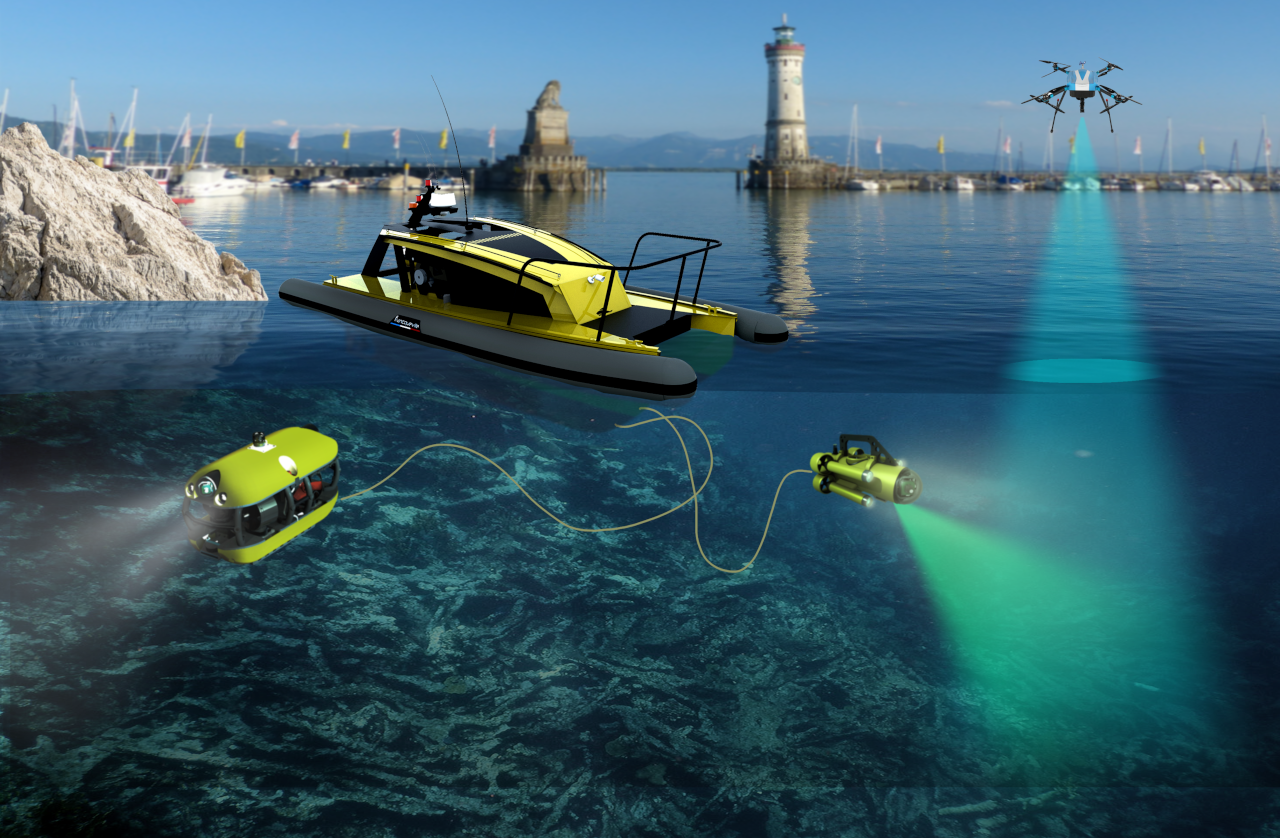
Today's oceans contain 26 to 66 million tons of waste, with approximately 94 per cent located on the seafloor. So far, the efforts to collect the waste have focused mostly on collecting it at the surface, with only a few local efforts to gather underwater waste, mostly using human divers. The SeaClear project funded by Horizon 2020 is breaking new ground. Cosmin Delea and Johannes Oeffner from Hamburg-based Fraunhofer-Center for Maritime Logistics and Services CML explain the strategy.
SeaClear, briefly for Search, Identification and Collection of marine Litter with Autonomous Robots, will create a mixed team of Unmanned Underwater, Surface, and Aerial Vehicles – UUVs, USVs, UAVs – to find and collect litter from both, the seafloor and the water column, focusing on coastal areas since that is where waste inflow concentrates. The UAV and one or several inspection UUVs map the litter, aiming at establishing correlations between surface and underwater litter. One or multiple collection UUVs then classify and collect litter, using a combined suction-gripper manipulator for both small and large waste. The UUVs are tethered to offload power and computation to the USV. The objective is to operate the robots autonomously, without remote human intervention, and to that end the scientists plan novel developments in debris mapping, classification, and robot control.
The collection UUV’s gripper is the centerpiece of the project: at beginning of June 2021, the team introduced the prototype of the device at Technical University of Munich. This version is decisively simple for robust operation under harsh conditions and will provide a baseline for comparing its efficiency to upgrades with suction capabilities and other advanced features. Eventually, the SeaClear Gripper grabbed its first pieces of litter in test runs conducted at the Technical University of Munich.
When fully operational, the SeaClear system aims for detecting and classifying underwater litter with a success rate of 80 percent and at collecting it with a success rate of 90 percent; all this at 70 % reduced cost compared to divers. SeaClear will demonstrate these features in two case studies: one in port cleaning (with end-user Hamburg Port Authority), and the other in a touristic area (Dubrovnik – with end-user DUNEA). Besides the two end-users, the consortium includes an SME supplying proven hardware for our platform; an experienced marine system integrator; and four academic institutions with complementary expertise in underwater and aerial robotics, sensing, mapping, and control.
With that, the SeaClear project will develop the first solution ever that exploits autonomous robots for underwater litter collection. The platform for search, identification, and collection of sea litter using autonomous UAVs and UUVs will innovate in the following technical directions:
- online classification of identified elements into debris and marine life
- integrated underwater and surface mapping
- underwater collection of small and medium-size litter
- cooperative control of the robotic team
The recent official animation of the project, published as part of World Water Day this March, explains in a graphical way the objectives of SeaClear and how SeaClear is planning to achieve them. It shows the way the robots are expected to interact with each other and their individual role in the system, together with the importance and the impact of our proposed solution.
ABOUT THE AUTHORS
M.Sc. Johannes Oeffner is Team Leader “Maritime Technologies and Biomimetics” at Fraunhofer-Center for Maritime Logistics and Services CML in Hamburg. Cosmin Delea is Research Associate in the Team “Maritime Technologies and Biomimetics” at Fraunhofer-Center for Maritime Logistics and Services CML and leads the SeaClear Project internally for Fraunhofer CML.
ABOUT THE PROJECT
SeaClear started its work on January 1, 2020. The consortium consists of 8 European partners and will run for 4 years. The feasibility of SeaClear is completed by an exploitation and dissemination strategy that actively involves scientists, public and industry stakeholders, and Digital Innovation Hubs. For more information see www. seaclear-project.eu.
 Fraunhofer Institute for Material Flow and Logistics IML
Fraunhofer Institute for Material Flow and Logistics IML
